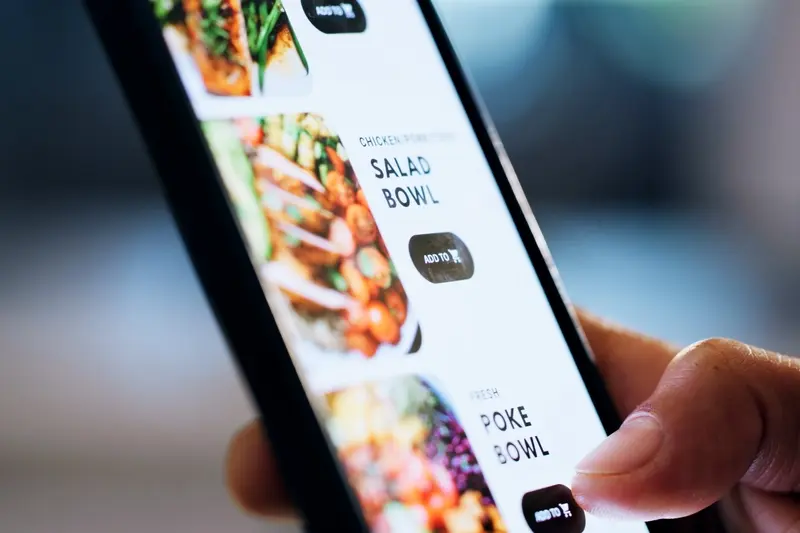Should I Build For iPhone Or Android First?
Here's an interesting stat, over 90% of app founders we speak to have no idea which platform to launch on first. They know they want to build an app, they've got their idea sorted, but when it comes to choosing between iOS vs Android they freeze up completely. Should they go with iPhone first because that's what they use? Or Android because it has more users worldwide? The decision feels massive—and honestly, it is.
Getting your mobile platform strategy wrong can cost you months of development time and thousands in budget. I've watched brilliant app ideas struggle because the founders picked the wrong platform to start with. They either missed their target audience entirely or burned through their budget before reaching the users who actually wanted to pay for their product.
The platform you choose first isn't just a technical decision—it's a business strategy that affects everything from your development timeline to your revenue potential
That's why we've put together this expert guide. We'll walk you through the key factors that should influence your iPhone app versus Android app decision, from understanding user demographics to comparing development costs. By the end, you'll have a clear framework for making this choice based on your specific situation, not just gut feeling or personal preference.
Understanding Your Target Audience
Before you even think about iOS versus Android, you need to know who you're building for. I can't tell you how many times I've seen brilliant apps fail because the developers built for the wrong platform—or worse, they didn't really understand their users at all.
Your target audience isn't just about age groups or income levels; it's about behaviour patterns, preferences, and how people actually use their phones. iPhone users tend to spend more money on apps and in-app purchases, but Android users make up a much larger global audience. The choice between platforms often comes down to where your specific users hang out.
Research Your Users' Platform Preferences
Start by looking at your existing customers if you have them. What phones do they use? If you're building something completely new, research similar apps and see where they found success first. A business productivity app might do well starting with iPhone users who typically have higher spending power, whilst a gaming app targeting younger users might find more success on Android initially.
Consider Geographic and Demographic Factors
Geography plays a huge role here. Android dominates in developing markets and much of Europe, whilst iPhone has stronger presence in the US, UK, and Australia. Your user demographics—age, income, tech-savviness—will heavily influence which platform they prefer and how they discover new apps.
Market Share and User Demographics
When I'm working with clients on their mobile platform strategy, the numbers tell a fascinating story. Android dominates globally with around 70% market share, but here's where it gets interesting—this varies dramatically by region and demographic. In the UK and US, iPhone users make up a much larger chunk of the market than you might expect.
The demographic split between iOS vs Android users is quite revealing too. iPhone users typically skew towards higher income brackets and tend to be more willing to spend money on apps. They're often younger professionals living in urban areas. Android users represent a broader demographic spread—think of it as the more diverse crowd—but this includes many users in developing markets where spending power might be lower.
Regional Differences Matter
Geography plays a huge role in your app platform choice. If you're targeting markets like India or Brazil, Android is king. But if you're focusing on affluent markets like Japan or Australia, iPhone usage jumps significantly. I've seen many clients make the mistake of looking at global stats when their target market tells a completely different story.
Always research your specific target market's platform preferences rather than relying on global statistics—the difference can be staggering and will directly impact your app's success.
Development Costs and Timeline Differences
Let's talk money and time—two things we never seem to have enough of when building an app! Over the years I've noticed that most people assume iOS and Android development costs are pretty much the same. They're wrong.
Building for iOS typically costs less and takes less time. Why? Apple has fewer devices to worry about. You're dealing with a handful of iPhone models and screen sizes compared to Android's thousands of different devices. That means less testing, fewer headaches, and shorter development cycles. I've seen iOS projects wrap up 20-30% faster than their Android counterparts.
The Android Challenge
Android development is trickier because of device fragmentation. Your app needs to work perfectly on a budget Samsung phone, a high-end Google Pixel, and everything in between. Different screen sizes, different Android versions, different hardware capabilities—it all adds up to more development time and higher costs.
Budget Planning
If you're working with a tight budget or deadline, starting with iOS makes financial sense. You can launch faster, start generating revenue sooner, and use those profits to fund your Android version. Many successful apps have followed this exact path—build for iPhone first, prove the concept works, then expand to Android once the money starts flowing.
Revenue Potential and Monetisation Models
Let's talk money—because that's what most app owners care about, isn't it? The revenue potential between iOS vs Android shows some interesting patterns that might surprise you. iPhone users typically spend more money on apps and in-app purchases. We're talking about roughly three times more per user compared to Android users. That's a significant difference when you're planning your mobile platform strategy.
App Store vs Google Play Revenue
The App Store generates more revenue despite having fewer downloads than Google Play. iPhone app users seem more comfortable pulling out their digital wallets, which makes iOS particularly attractive for premium apps and subscription models. Android app users download more apps overall, but they're more price-sensitive and prefer free alternatives.
iPhone users represent a smaller but more profitable audience, while Android offers massive reach with lower individual spending
Different Monetisation Approaches
Your app platform choice should align with your monetisation strategy. Freemium models work well on both platforms, but iOS performs better for premium pricing and subscriptions. Android's larger user base makes it excellent for ad-supported apps—more users mean more ad impressions. In-app advertising tends to perform better on Android simply because of the volume, whilst iOS excels at converting users to paid features.
Consider your business model carefully when making this decision; the platform you choose will significantly impact your revenue potential.
Technical Considerations and Platform Capabilities
When I'm working with clients on their first app, the technical differences between iOS and Android always come up—and for good reason. These platforms handle things quite differently under the hood, which can affect your development timeline and budget in ways you might not expect.
Development Languages and Tools
iOS apps are built using Swift or Objective-C, and you'll need Xcode running on a Mac. That's non-negotiable. Android development uses Java or Kotlin with Android Studio, which runs on any operating system. If your development team doesn't have Macs, that's an immediate cost consideration for iOS development. I've seen small teams get caught out by this seemingly simple requirement.
Device Fragmentation
Here's where things get interesting. Apple controls both the hardware and software, so you're dealing with a relatively small number of device combinations. Android? Well, there are thousands of different devices out there with varying screen sizes, processing power, and Android versions. Testing becomes more complex and time-consuming on Android—you can't just test on one or two devices and call it done. This fragmentation means Android apps often take longer to perfect across all devices, but the flip side is you're reaching a much more diverse hardware ecosystem.
App Store Guidelines and Approval Processes
Here's something that might surprise you—getting your app approved isn't just about building something that works. Both Apple's App Store and Google Play have their own set of rules, and they're quite different from each other. Apple tends to be much stricter with their review process, which can take anywhere from 24 hours to several days. Sometimes longer if they find issues. Google Play is generally more relaxed and often approves apps within a few hours.
Apple's reviewers look at everything—your app's functionality, design, content, and whether it follows their Human Interface Guidelines. They're particularly fussy about apps that feel unfinished or don't offer enough value to users. Google Play focuses more on security and policy violations, though they've been tightening their standards over the years.
What This Means for Your Platform Choice
If you're building for iPhone first, you'll need to factor in extra time for potential rejections and resubmissions. I've seen apps get knocked back for seemingly minor issues—like having a button that doesn't quite look right or missing privacy policy links. Android apps typically get to market faster, but don't assume that means lower quality standards.
Always read the latest store guidelines before you start development, not after you've finished building. It'll save you weeks of back-and-forth with the review teams.
Long-term Strategy and Cross-Platform Planning
Here's something most people don't think about when they're choosing their first platform—what happens after launch? I've worked with clients who built a brilliant iPhone app, saw great success, then panicked when they realised they'd locked themselves into technical decisions that made expanding to Android a nightmare. The platform you choose first sets the foundation for everything that comes next.
Building with Tomorrow in Mind
Smart businesses plan for cross-platform expansion from day one, even if they're only building for one platform initially. This means thinking about your app's architecture, choosing development approaches that won't paint you into a corner later, and budgeting for that second platform launch. Some companies use frameworks like React Native or Flutter to build once and deploy everywhere—though there are trade-offs in performance and platform-specific features you'll need to weigh up.
Timing Your Cross-Platform Move
The sweet spot for launching on your second platform usually comes 3-6 months after your first launch, once you've ironed out the major bugs and gathered user feedback. Don't rush it though—a poor second platform launch can damage your brand more than waiting a bit longer. Plan your resources accordingly; you'll need budget for development, testing, marketing, and ongoing maintenance across both platforms.
Conclusion
After eight years of helping businesses make this exact choice, I can tell you there's no universal right answer to the iOS vs Android question. What works for one app won't work for another—it really does come down to your specific situation, your users, and your business goals.
The data we've covered paints a clear picture: if you're targeting users with higher spending power and want faster development, iPhone apps often make sense as a starting point. But if you need to reach the largest possible audience globally or you're working with a tighter budget, Android might be your better bet. The technical considerations matter too—some features work better on one platform than the other.
Here's what I always tell my clients: don't overthink it. Pick the platform that aligns best with where your users are and what you can afford to build properly. A well-executed app on one platform will always beat a rushed app trying to do everything at once. You can always expand to the second platform once you've proven your concept and generated some revenue. The most successful apps I've worked on started focused and grew strategically from there.
Share this
Subscribe To Our Learning Centre
You May Also Like
These Related Guides

Do I Need a Food Delivery App or Can I Just Use Third-Party Platforms?

Do I Actually Need An App For My Business?



